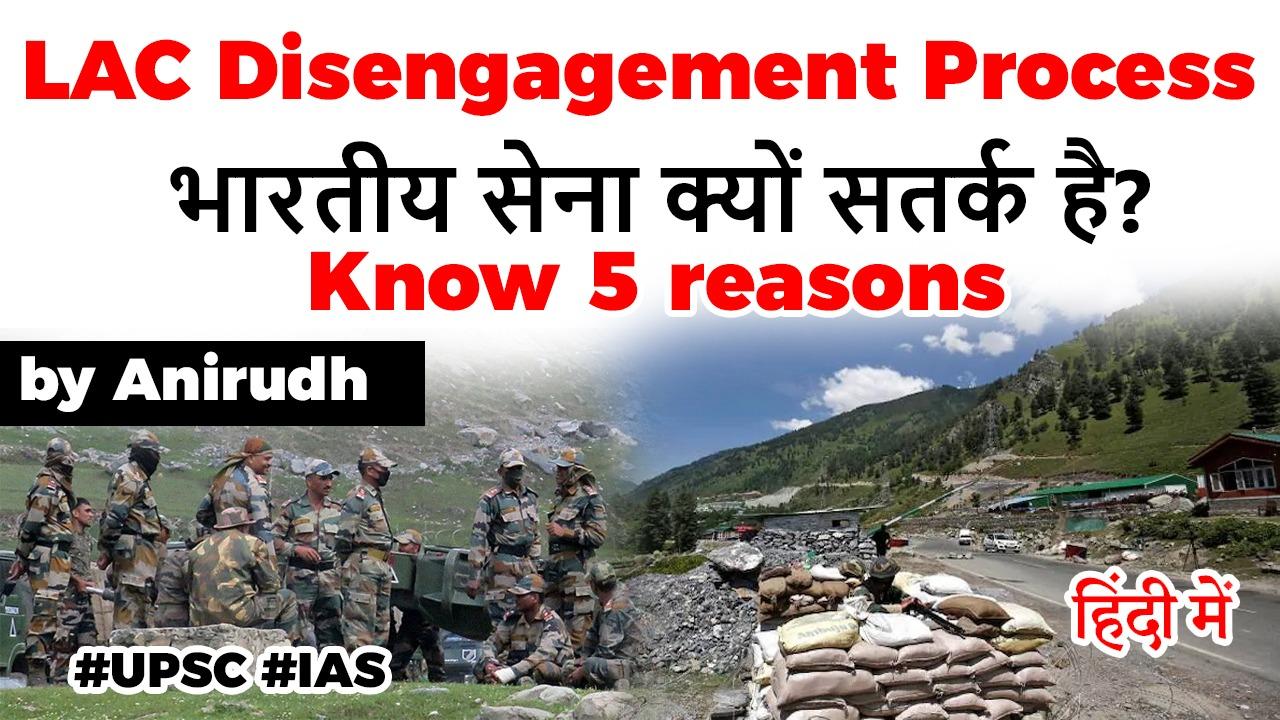Table of Contents
CHINESE AND INDIAN TROOPS BEGAN DISENGAGEMENT ON JULY 6
- Even though Monday’s events constitute an important step in the disengagement process on the LAC between India and China.

BUT: INDIAN ARMY IS STILL ALERT
- these will have no bearing on either the Army’s alertness levels or its preparations for long-haul deployment in the barren mountainous terrain of Ladakh.

REASON NO. 1: HIGH LEVEL OF MISTRUST
- The foremost reason for this is the high level of mistrust between the two armies caused by multiple incidents on the border over the past nine weeks.
- June 6: First round of talks at the level of the Corps Commander, the two armies had started the disengagement process from Galwan sector
- June 15: Violent clash (Death of 20 Indian Soldiers)
HENCE, THE ARMY IS RIGHTLY CAUTIOUS AT EVERY STEP
- As the two sides start repeating the disengagement process, the Indian side is doubly cautious in its insistence on verifying every single step in detail before moving to the next step.
REASON NO. 2: PROCESS IS GRADUAL
- According to a senior Army officer, the first step in all ‘friction points’ will itself take two to three weeks, which will be followed by another round of talks between military commanders to arrive at the second step. This by itself forecasts an extended deployment period which could stretch into weeks, if not months, without any hitch being encountered during the whole process.
REASON NO. 3: DISENGAGEMENT ISN’T THE SAME AS DE-ESCALATION
- Even after the disengagement process is over, the process of deescalation from rear areas will be equally cumbersome. The soldiers and heavy equipment will get de-inducted but only in phases and in numbers matched by the other side. Considering the quantum of troops, weaponry and equipment moved to the theatre, this will take a lot of time, again prolonging the deployment for the Army.
REASON NO. 4: SITUATION IN PANGONG TSO
- In all the meetings till date, the Chinese side has so far not relented in its stance on Pangong, where it has constructed massive infrastructure and undertaken huge deployment eight kilometres on to the Indian side of the LAC.



- If this remains the case – and it is likely to be so – it will be unacceptable to India and remain a major flashpoint between the two armies.
- This could then erupt anytime and engulf the rest of the LAC as witnessed this May. It was on the night of May 5/6 that Indian and Chinese soldiers clashed violently on the banks of the lake, with major injuries on both sides, and the dispute did not remain localized to the Pangong area alone.
REASON NO. 5: CREATION OF DE FACTO ‘BUFFER ZONES’
- They are believed to be temporary. These ‘buffer zones’ are areas of no-man’s land which end up denying Indian access to certain portions of the LAC, such as PP14, PP15 and PP17A.
- The Army would like to regain full access to these PPs at the earliest as part of its primary role of ensuring territorial integrity. If Chinese response is hostile or violent, a situation could soon emerge which warrants greater military involvement, an operational contingency it was not prepared for in the routine course.

Latest Burning Issues | Free PDF






















 WhatsApp
WhatsApp